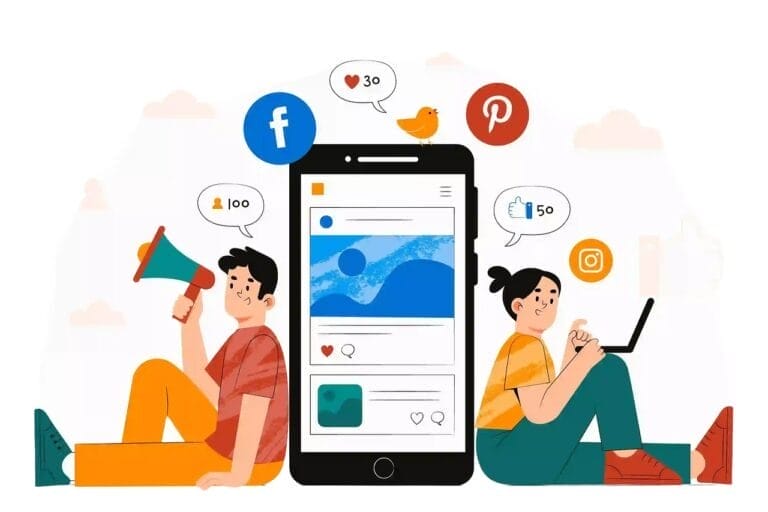Artists are no longer confined to galleries and exhibitions to showcase their work. Today, platforms like YouTube offer a global stage to display your creativity. But is YouTube worth the time and effort for artists? Let’s delve into this question.
YouTube, with its billions of users worldwide, is a behemoth in the realm of online video content. It’s a space where anyone can share their ideas, skills, and creations, artists included. But like any platform, it comes with its own set of advantages and challenges. Should your Art Marketing strategy include Youtube? Let’s take a look.
On the positive side, starting an art Youtube channel offers artists a unique opportunity to reach a vast audience. It’s a platform where you can share your artistic process, connect with a community of art enthusiasts, and even monetize your content. For example, artists like James Gurney have successfully used YouTube to share their art tutorials and plein air painting adventures, reaching hundreds of thousands of subscribers.

On the flip side, building a successful YouTube channel requires significant time and effort. It’s not just about creating art; it’s about creating engaging video content, optimizing for search, and consistently interacting with your audience. Plus, the platform’s monetization policies mean that making a substantial income from YouTube alone can be challenging, especially for channels just starting out.
In this article, we’ll explore the pros and cons of YouTube for artists in more depth. We’ll discuss how to develop a YouTube strategy, the potential for income generation, and the benefits beyond monetary gain. We’ll also touch on the business case for artists on YouTube and how the platform can aid in selling art.
Whether you’re an established artist looking to expand your online presence or an emerging artist curious about digital platforms, this article aims to provide a comprehensive overview of what YouTube can offer you. Let’s dive in.
The Benefits of Creating a YouTube Channel for Artists

In this digital era, having an online presence is almost a necessity for artists. YouTube, being one of the largest platforms for video content, offers several benefits to artists. Let’s explore these advantages in detail.
YouTube has over two billion logged-in monthly users. This vast user base offers artists an unparalleled opportunity to reach a global audience. For instance, an artist based in New York can share their work with art enthusiasts in Paris, Tokyo, or Sydney, all at the click of a button.
Art is not just about the final product; the process is equally fascinating. YouTube allows artists to share their creative journey with viewers. Time-lapse videos of your artwork, behind-the-scenes content, or tutorials can offer viewers a unique insight into your artistry. For example, Marcello Barenghi, a hyperrealism artist, shares time-lapse videos of his incredibly realistic drawings, captivating his audience with his process.
YouTube is not just a platform for sharing videos; it’s a community. Artists can engage with viewers through comments, live chats, and even community posts once they reach a certain number of subscribers. This interaction can help artists build a supportive community, receive feedback, and foster a sense of belonging.
While it’s not easy to make a substantial income from YouTube, the platform does offer various monetization options. These include ad revenue, channel memberships, and the YouTube Partner Program. However, these require meeting certain criteria, such as having a minimum number of subscribers and watch hours.
A YouTube channel can serve as a powerful branding and marketing tool. By consistently sharing your work and insights, you can establish a unique brand and increase your visibility in the art world. For instance, Mary Doodles has created a distinct brand around her whimsical doodle art and storytelling.
Developing a YouTube Strategy for Artists
Creating a YouTube channel is just the first step. To truly leverage the platform’s potential, you need a well-thought-out strategy. Here are some key elements to consider:
Understanding Your Audience and Content Focus
Before you start creating content, it’s essential to define your target audience and determine your content focus. Are you targeting fellow artists with advanced tutorials, or are you aiming to reach art enthusiasts with a behind-the-scenes look at your creative process? Understanding your audience’s interests and needs will help you create content that resonates with them.

Consistency, Quality, and Optimization
Consistency is key on YouTube. Develop a content schedule that you can realistically maintain and commit to regular uploads. However, consistency shouldn’t come at the expense of quality. Invest in good equipment to ensure your videos have high production value.
Additionally, optimizing your content for search is vital. Conduct keyword research to understand what your target audience is searching for on YouTube. Incorporate relevant keywords in your video titles, descriptions, and tags to increase the chances of your content being discovered.
Audience Engagement and Collaboration
Building a strong connection with your audience is crucial. Respond to comments, ask for feedback, and encourage viewers to interact with your content. This engagement will foster loyalty and encourage them to share your videos with others.
Collaborating with other artists or YouTubers can also help you expand your reach and tap into new audiences. Consider collaborating on art projects, and challenges, or even featuring each other’s work on your channels.
Promotion and Analysis
Promote your YouTube channel on other social media platforms to drive traffic to your videos. Regularly review your YouTube analytics to gain insights into what content is performing well and what is resonating with your audience. Use this data to refine your content strategy and make informed decisions about future video topics.
In the end, authenticity is key. Be true to yourself and your artistic vision. Authenticity will help you connect with your audience on a deeper level and build a loyal following.
Making a Consistent Income from YouTube

While YouTube offers various monetization options, making a consistent income from your channel can be a complex process. Here are some key considerations:
Monetization Requirements and Ad Revenue
YouTube’s recent changes to the Partner Program offer artists a more accessible pathway to monetization and deeper audience engagement. By lowering the eligibility criteria, artists can now connect with their viewers through fan funding features and promote their own products via YouTube Shopping even sooner.
This means that with just 500 subscribers and a consistent upload schedule, artists can start to monetize their channels. As artists grow their audience and meet higher thresholds, they can further unlock revenue through YouTube Advertising and Premium subscriptions. These changes provide artists with more opportunities to support their creative work and build a sustainable career on the platform.
For a deeper understanding of YouTube monetization, consider reading this guide from the YouTube Creator Academy.
Alternative Revenue Streams and Audience Engagement
Artists can explore alternative revenue streams to supplement their ad revenue. This can include brand collaborations, sponsorships, affiliate marketing, selling merchandise, or receiving donations through features like Super Chat or channel memberships.
The level of audience engagement and the size of your subscriber base play a significant role in your earning potential. Engaged viewers are more likely to watch your videos, share them, and support your work financially.
Niche, Market Demand, and Consistency
The niche you choose and the demand for your content within that niche can impact your income potential. Some niches may have higher ad rates or attract brands interested in collaborations, while others may have a smaller audience and limited monetization opportunities.
Consistently uploading high-quality content that resonates with your target audience is crucial for building a successful YouTube channel. Regularly producing engaging and valuable content can help attract and retain viewers, which can lead to increased monetization opportunities.
It’s important to note that making a substantial income from a YouTube channel takes time, effort, and dedication. Many artists supplement their YouTube income with other sources, such as selling artwork, commissions, or teaching art classes. Diversifying your income streams can provide stability and support your artistic career.
The Value of YouTube for Artists: More Than Just Money
While earning money from your YouTube channel can be a desirable outcome, there are other significant reasons why artists choose to be on YouTube. These reasons extend beyond income and touch on the intrinsic value that the platform can offer to artists.
YouTube provides a platform for artists to showcase their work and reach a global audience. It’s a space where you can share your creative process, techniques, and insights with viewers. This exposure can help artists gain visibility, attract new fans or clients, and expand their artistic network.
Moreover, YouTube fosters a sense of community and connection. Artists can engage with their viewers through comments, live chats, and collaborations. Building a supportive community can provide valuable feedback, inspiration, and even potential collaborations.
Many artists use YouTube as a platform to educate and inspire others. By sharing tutorials, tips, and insights, artists can help aspiring artists learn new techniques, develop their skills, and find inspiration.
YouTube can also be a valuable networking tool for artists. It offers opportunities to collaborate with other artists, creators, or influencers, which can lead to new artistic projects, joint exhibitions, or other creative endeavors.
Being on YouTube allows artists to grow and develop their artistic practice. It provides a space for experimentation, feedback, and self-reflection, which can lead to personal and artistic growth.
While making an income from YouTube can be a goal for some artists, it is not the sole purpose. Artists often find fulfillment in sharing their passion, connecting with a community, and inspiring others through their YouTube channel.
The Business Case for YouTube
In this section, we’ll explore the business case for an artist to be on YouTube. While the platform does require a significant investment of time and effort, it also offers numerous benefits that can contribute to an artist’s career growth and success. Let’s examine these benefits in a tabular format for clarity:
| Exposure and Reach | YouTube is one of the largest video-sharing platforms globally, providing artists with the opportunity to reach a vast audience and increase their exposure. |
| Brand Building | YouTube allows artists to establish and strengthen their personal brand through consistent content creation and showcasing their artistic style. |
| Marketing and Promotion | YouTube serves as a powerful marketing tool. Artists can promote their work, attract potential clients or buyers, and expand their market reach through the platform’s search and recommendation algorithms. |
| Monetization Opportunities | YouTube offers various monetization options, including ad revenue, brand collaborations, sponsorships, merchandise sales, and fan funding through features like Super Chat and channel memberships. |
| Community Engagement | YouTube facilitates direct engagement with viewers, fostering a sense of community. This engagement can lead to increased support, commission opportunities, and potential collaborations. |
| Educational Resources | YouTube allows artists to share their knowledge, techniques, and insights, positioning them as experts in their field and attracting an audience interested in learning from them. |
| Networking and Collaborations | YouTube serves as a networking platform, connecting artists with other creators, influencers, and industry professionals. Collaborations can lead to joint projects, exhibitions, or mutually beneficial partnerships. |
| Long-Term Asset | YouTube videos act as a long-term asset in an artist’s portfolio. Even after years of being uploaded, videos can continue to generate views, engagement, and potential business opportunities. |
In summary, being on YouTube as an artist offers exposure, brand building, marketing opportunities, monetization options, community engagement, educational resources, networking, and long-term assets. These factors collectively contribute to an artist’s business case for being on YouTube.
How YouTube Can Help Artists Sell Their Art
In the digital age, selling art is no longer limited to galleries and exhibitions. Online platforms like YouTube can play a significant role in an artist’s sales strategy. Let’s explore how.
YouTube serves as a dynamic platform for artists, offering a space to not only showcase their art but also to connect with a wide audience. By presenting their finished works and discussing their artistic process, artists can pique viewer interest and potentially drive sales. Building an engaged audience is another key aspect of this platform. Regular video creation and audience interaction can cultivate a loyal following, which can translate into potential buyers or advocates who amplify the artist’s reach by sharing their work.

The platform also allows artists to establish their authority in their field. By sharing tutorials, tips, and insights into their artistic techniques, artists can position themselves as experts, attracting viewers who are interested in learning from them and potentially more inclined to purchase their artwork. Personal storytelling is another powerful tool on YouTube. Sharing narratives about their art and creative journey can deepen viewers’ appreciation for the artist’s work, increasing the likelihood of sales.
YouTube also facilitates collaborations and partnerships, providing opportunities for artists to expose their work to new audiences and expand their reach. Collaborating on videos, joint projects, or art-related initiatives with other artists, influencers, or brands can lead to increased sales opportunities.
Furthermore, artists can build trust and credibility with potential buyers by sharing testimonials and reviews from satisfied customers. By featuring these testimonials in their videos, artists can reassure potential buyers about the quality of their art. In conclusion, YouTube can significantly aid artists in selling their art by offering a platform for showcasing their work, building an engaged audience, demonstrating expertise, fostering personal connections, and facilitating collaborations.
Bottom Line: Is YouTube Worth It for Artists?
Navigating the digital landscape as an artist can be challenging, and the decision to invest time and effort into a platform like YouTube is not one to be taken lightly. However, as we’ve explored in this article, YouTube offers numerous benefits that can significantly contribute to an artist’s career.
YouTube provides a platform for exposure and reach, allowing artists to showcase their work to a global audience. It’s a space for creative expression and community building, where artists can share their artistic journey and connect with like-minded individuals. YouTube also offers various monetization opportunities, although making a consistent income from the platform requires meeting certain criteria and building a substantial and engaged audience.
Developing a successful YouTube channel requires a well-thought-out strategy, focusing on understanding your audience, creating consistent and high-quality content, optimizing for search, engaging with your audience, and analyzing your performance. Collaborations can also help expand your reach and tap into new audiences.
While making an income from YouTube can be a goal for some artists, the platform offers significant benefits beyond monetary gain. These include educational opportunities, networking, and personal growth.
When it comes to selling art, YouTube can play a crucial role by showcasing your work, building an engaged audience, demonstrating your expertise, fostering personal connections, including calls-to-action, collaborating with others, and sharing testimonials.
However, it’s important to remember that success on YouTube is a long game. It requires patience, consistency, and dedication. The key is to gradually build up your content and engage with your audience. Over time, your audience and engagement will increase, leading to more opportunities for exposure, community building, and potential income.
In conclusion, while YouTube does require a significant investment of time and effort, it offers numerous benefits that can contribute to an artist’s career growth and success. It’s a platform that allows artists to share their passion, connect with a community, inspire others, and even generate income. So, is YouTube worth it for artists? The potential benefits suggest that it certainly can be.






